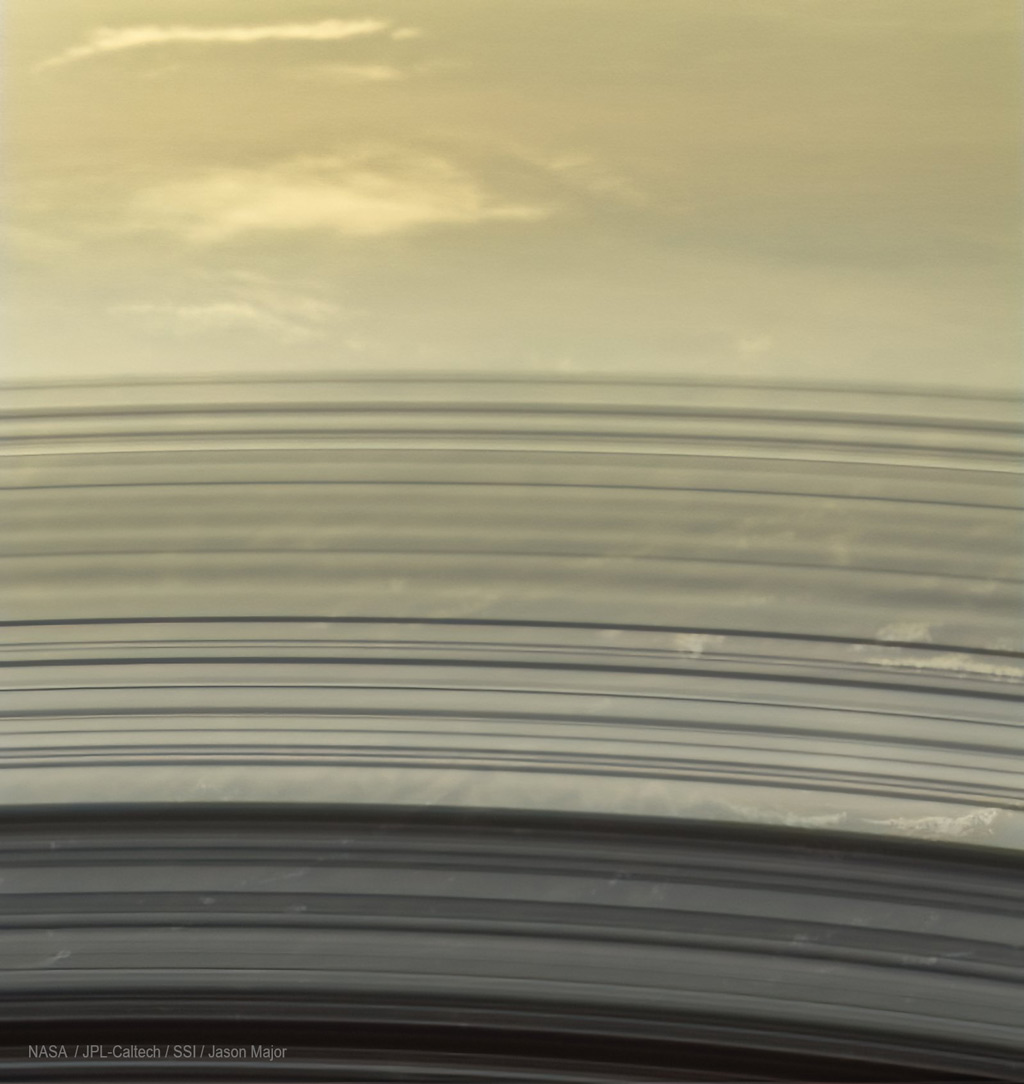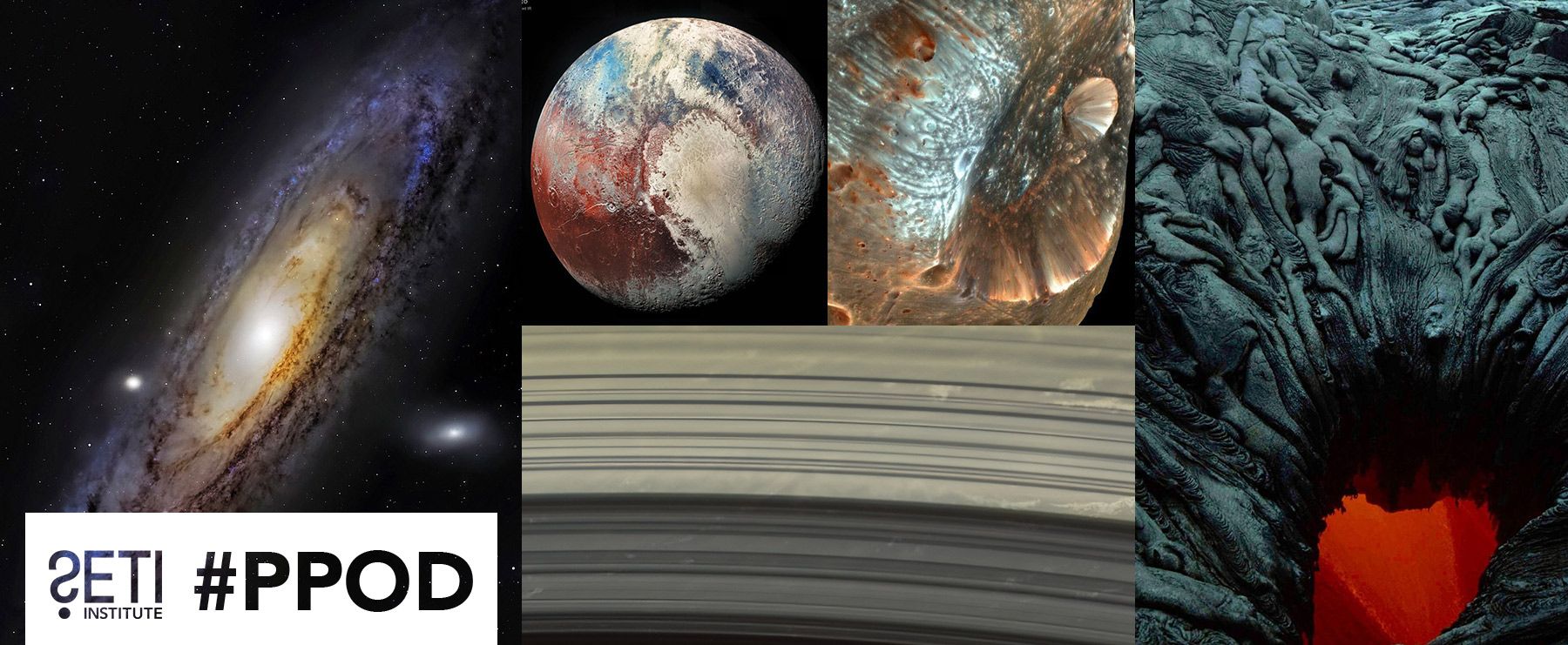
Planetary Picture of the Day
Week of February 14, 2022
Nature celebrates Valentine’s Day on Earth, infrared Pluto, Andromeda and more!
Monday, February 14, 2022
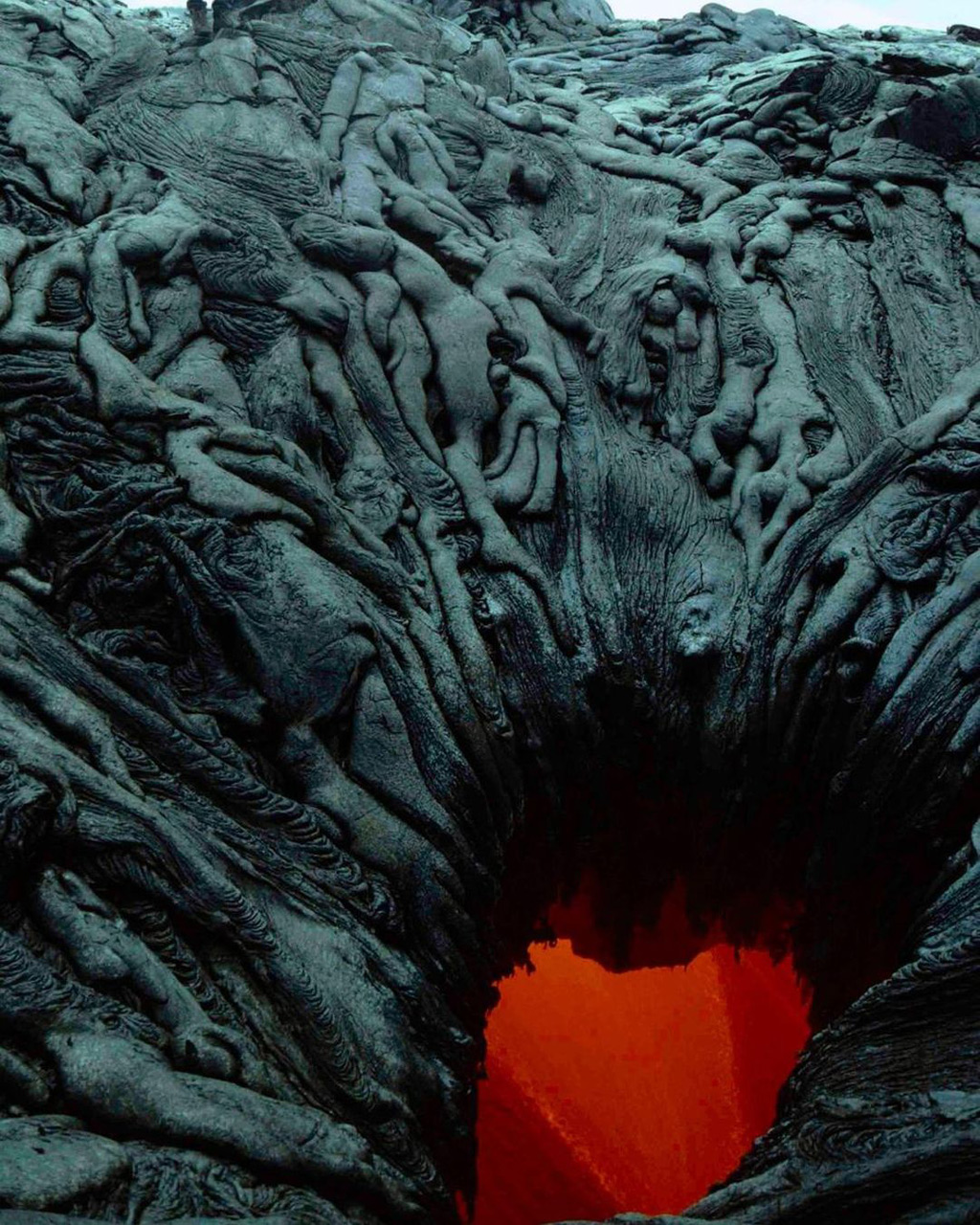
Credit: Laszlo Kestay/USGS
Heart of Fire
Mother Earth wishes you all a Happy Valentine’s Day!
This iconic 1996 photo of the West Kamokuna skylight in Hawai'i by Dr. Laszlo Kestay of the USGS shows crystalized lava that has flowed and solidified into contorted channels while molten rock continues to flow underneath it. For scale, the lava wall is about 4 meters high.
Tuesday, February 15, 2022
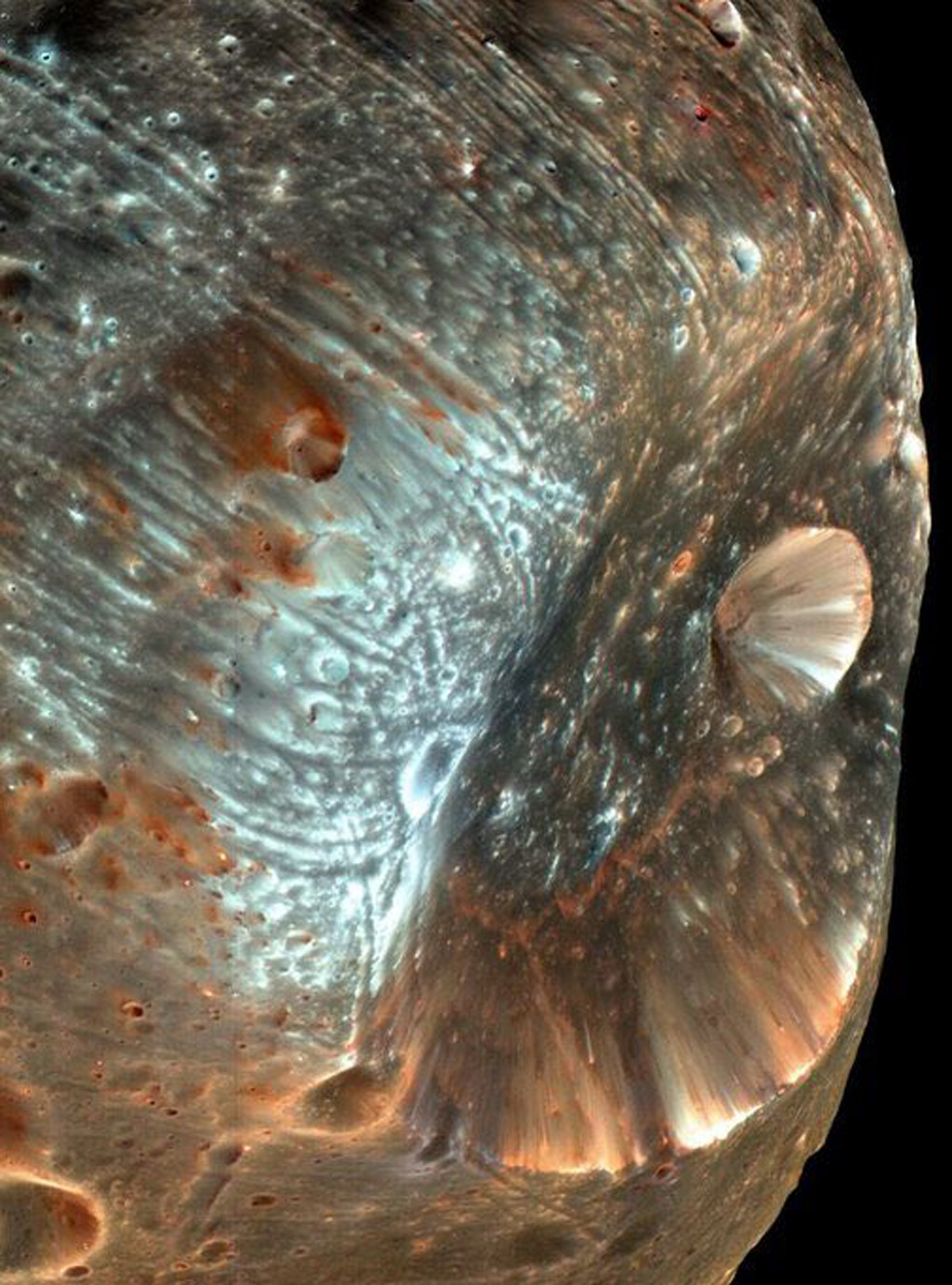
Credit: NASA/JPL-Caltech/University of Arizona.
Phobos
Phobos is the larger of Mars' two moons and is 27 by 22 by 18 kilometers in size. It orbits Mars three times a day and is so close to the planet's surface that in some locations on Mars, it cannot always be seen. Phobos is nearing Mars at a rate of 1.8 meters every hundred years; at that rate, it will either crash into Mars in 50 million years or break up into a ring.
Wednesday, February 16, 2022
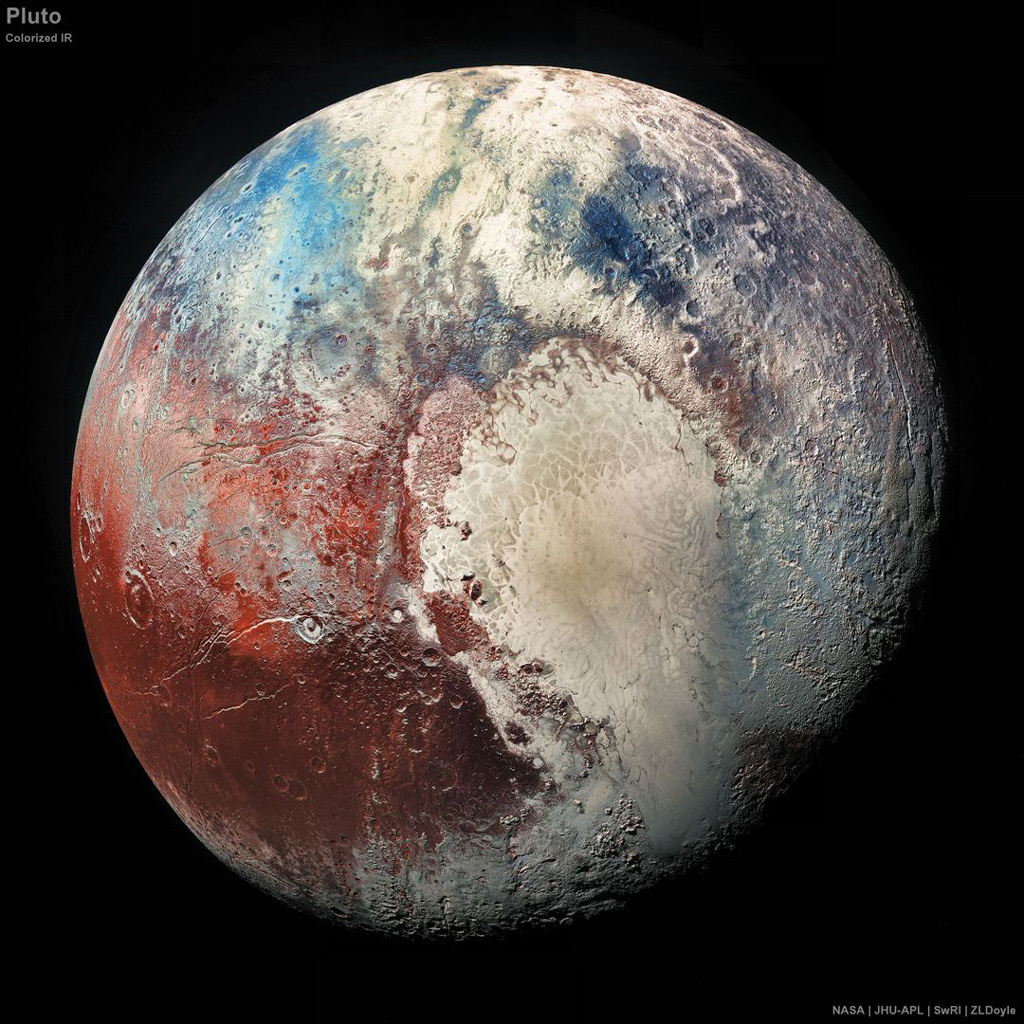
Credit: NASA / JHUAPL / SwRI / ZLDoyle
Pluto in Colorized Infrared
One of the most detailed images of Pluto taken with the New Horizons spacecraft back on July 14, 2015. This image includes a colorized infrared layer to show greater variations in the surface.
Thursday, February 17, 2022
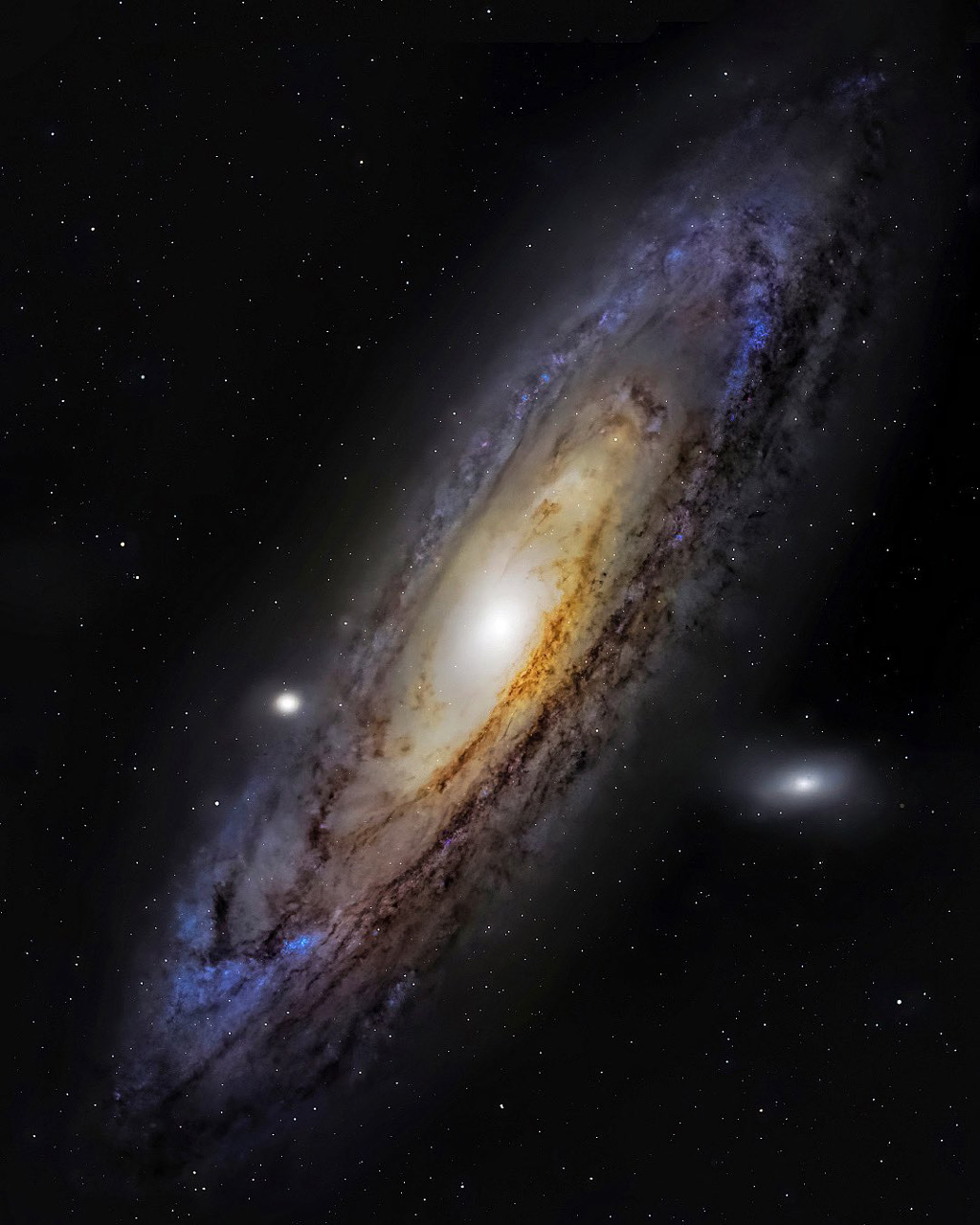
Credit: Dustin Gibson
Andromeda Galaxy
This spectacular photo of our galactic neighbor, also known as M31, involved over 20 hours of exposure and additionally captured satellite galaxies M32 (left) and M110 (right).
Friday, February 18, 2022
Credit Image: NASA/JPL-Caltech
Image processing: Jason Major
RGB color composite made from images taken by NASA's Cassini spacecraft on February 10, 2015 from a distance of about 377,000 km.
A Different View of Saturn
There is a lot going on in this image from the Cassini spacecraft. What you see are not the actual rings of Saturn (D and C) but the projection of their shadow on the atmosphere and, yes, clouds underneath.

